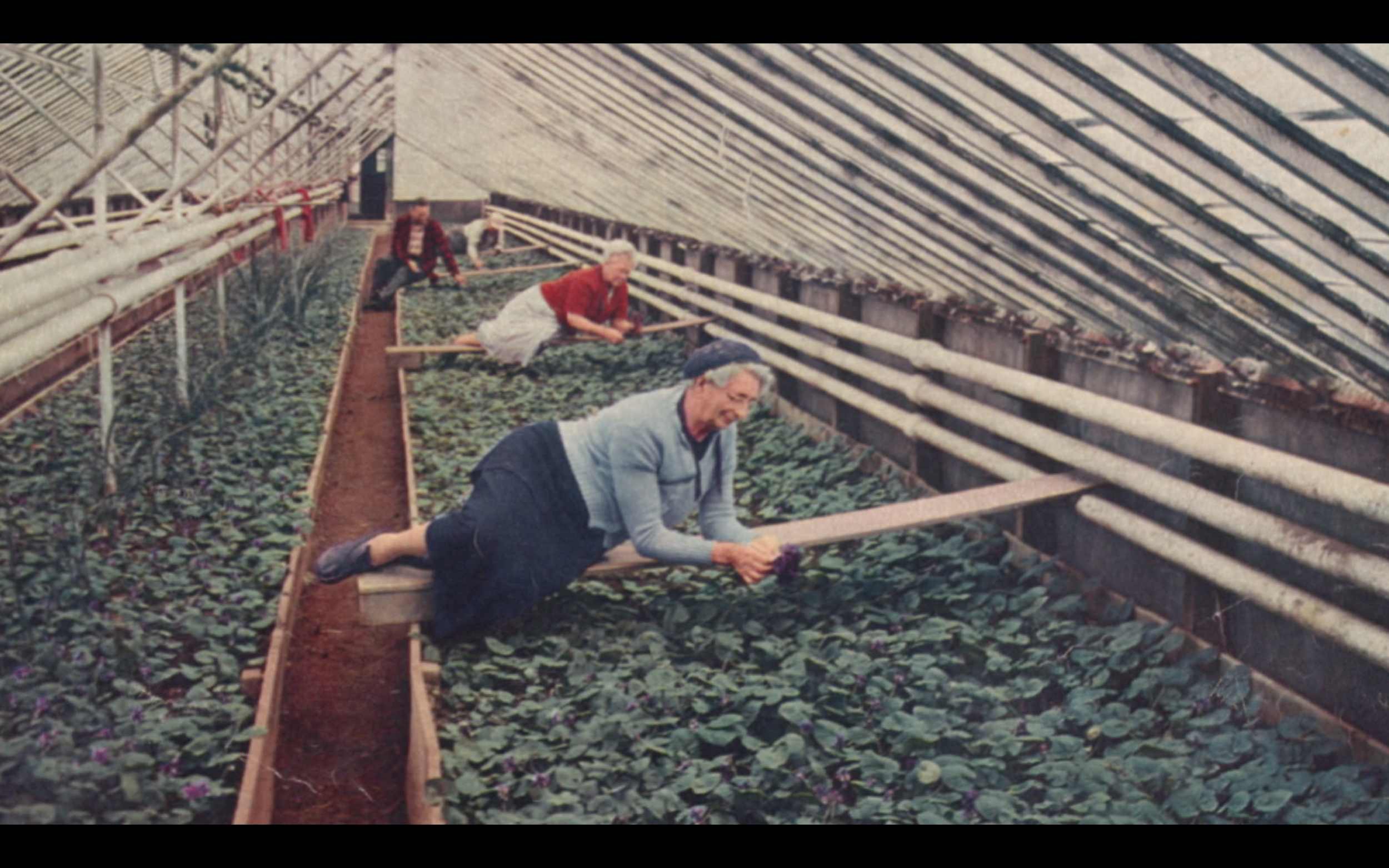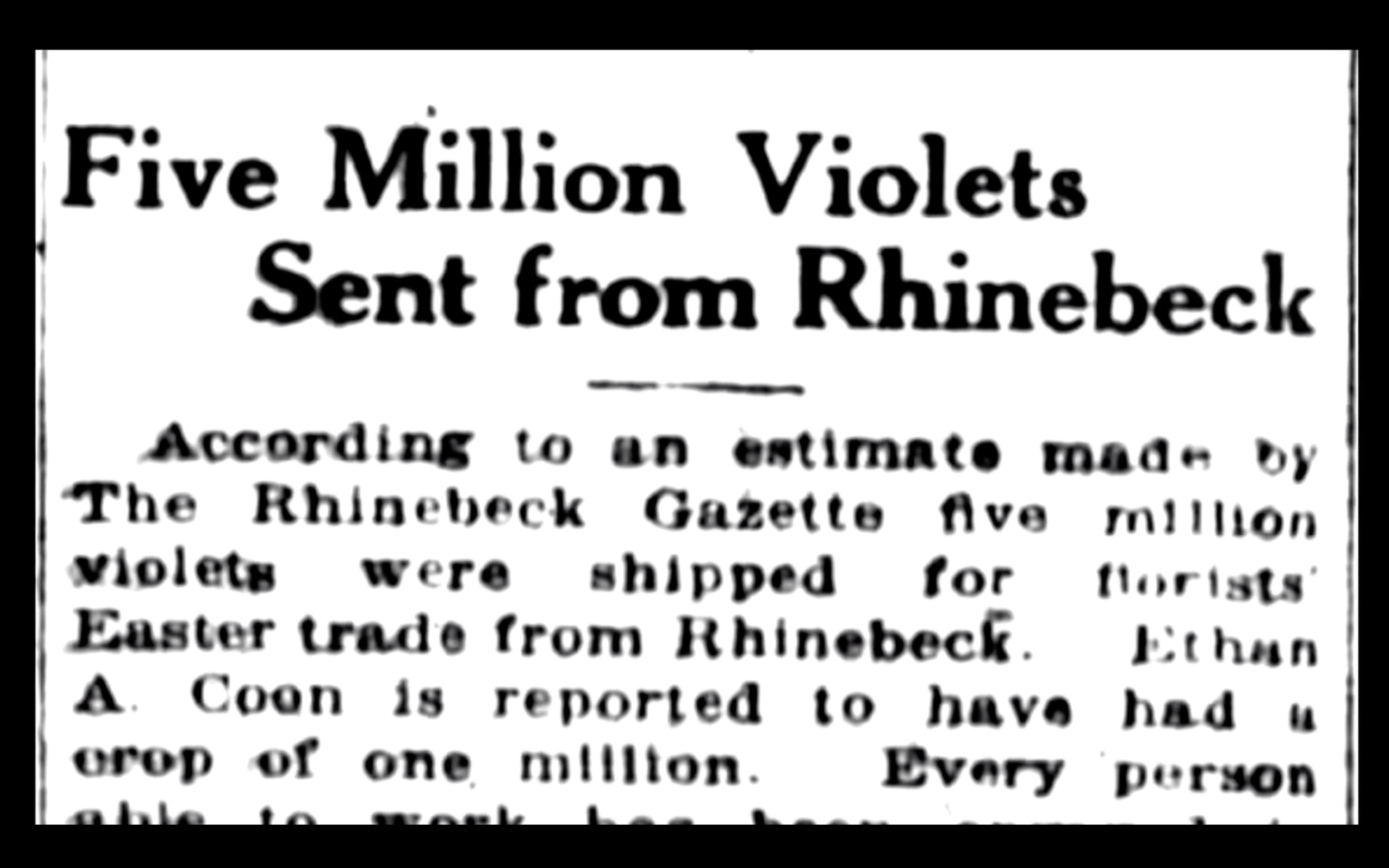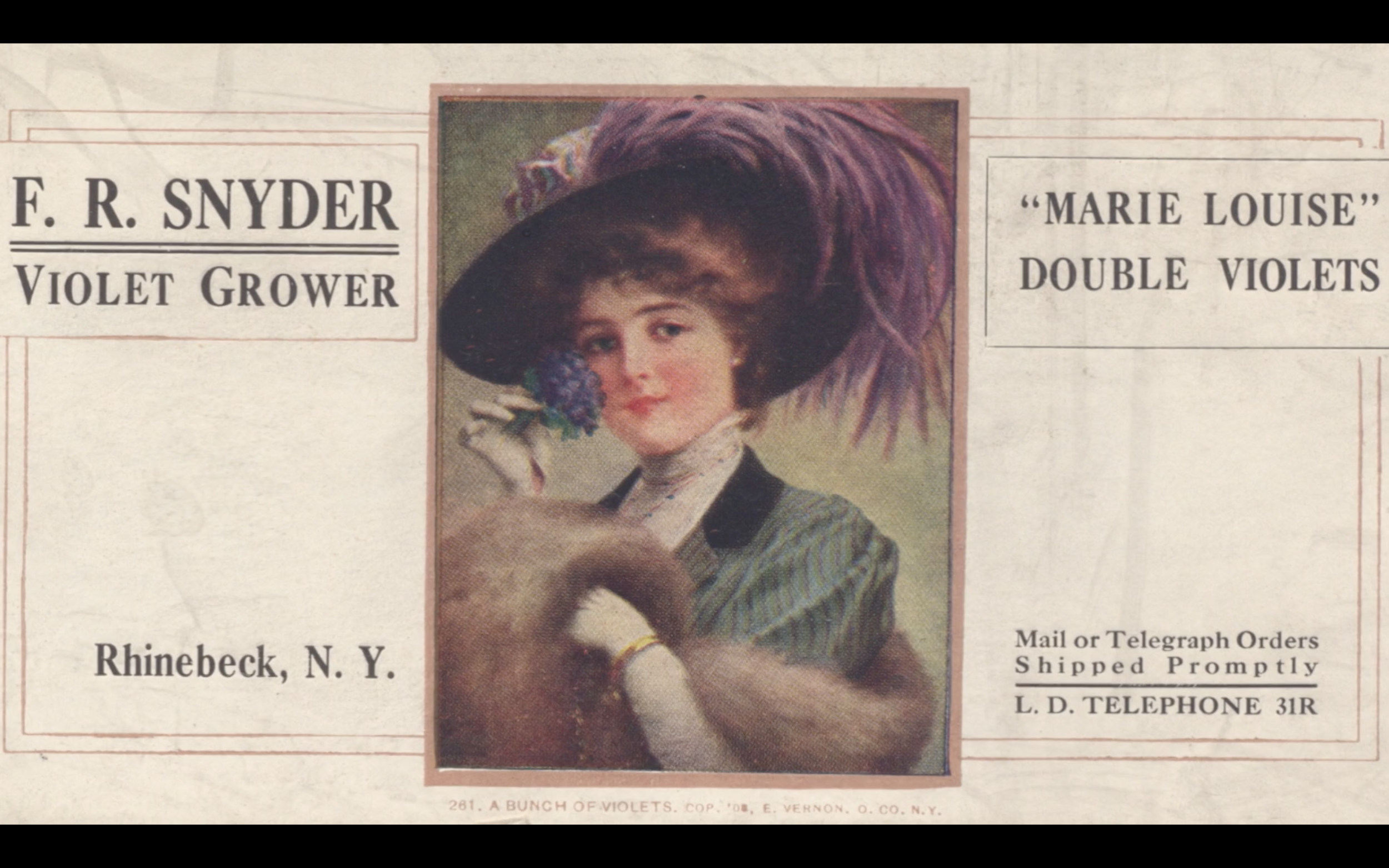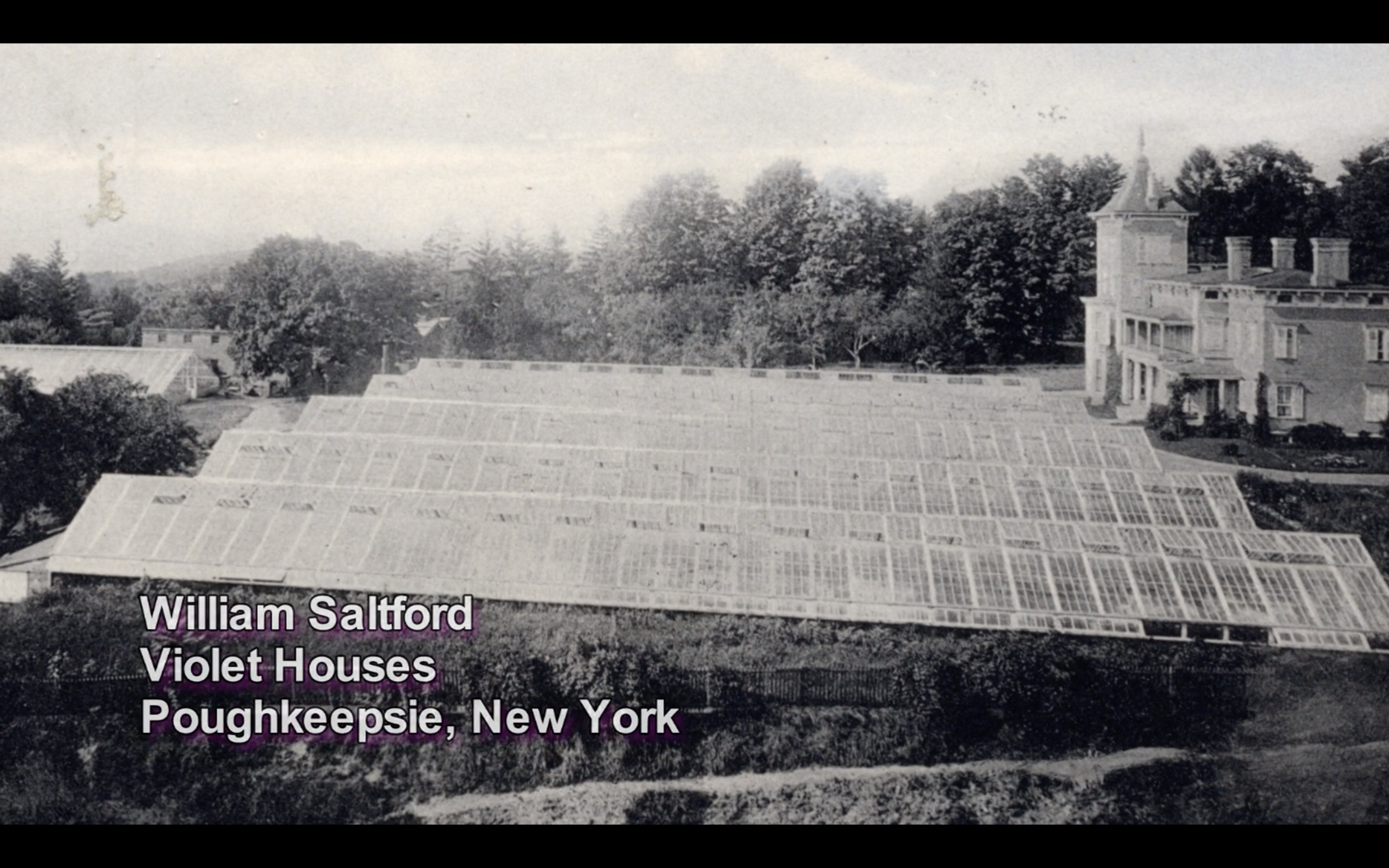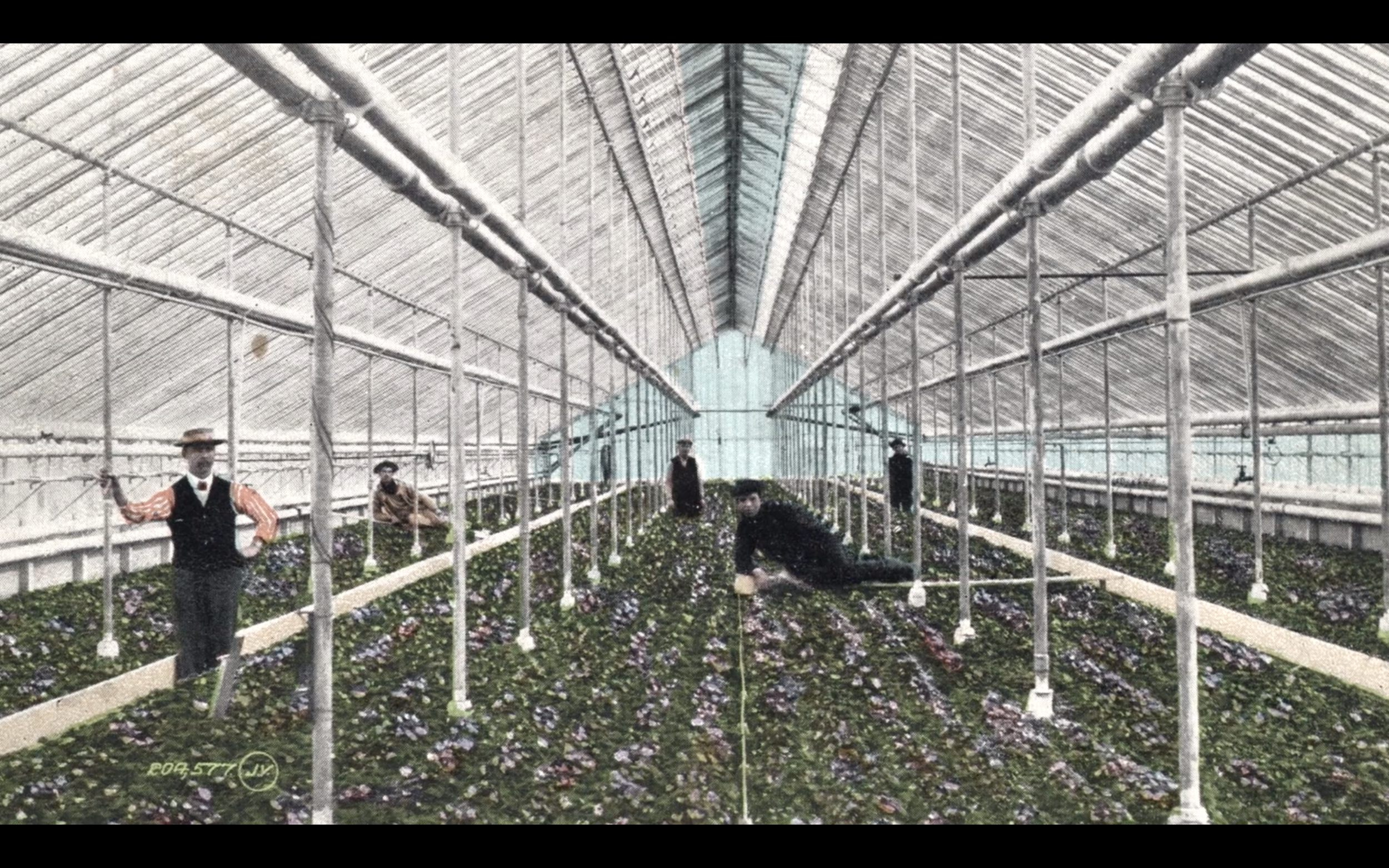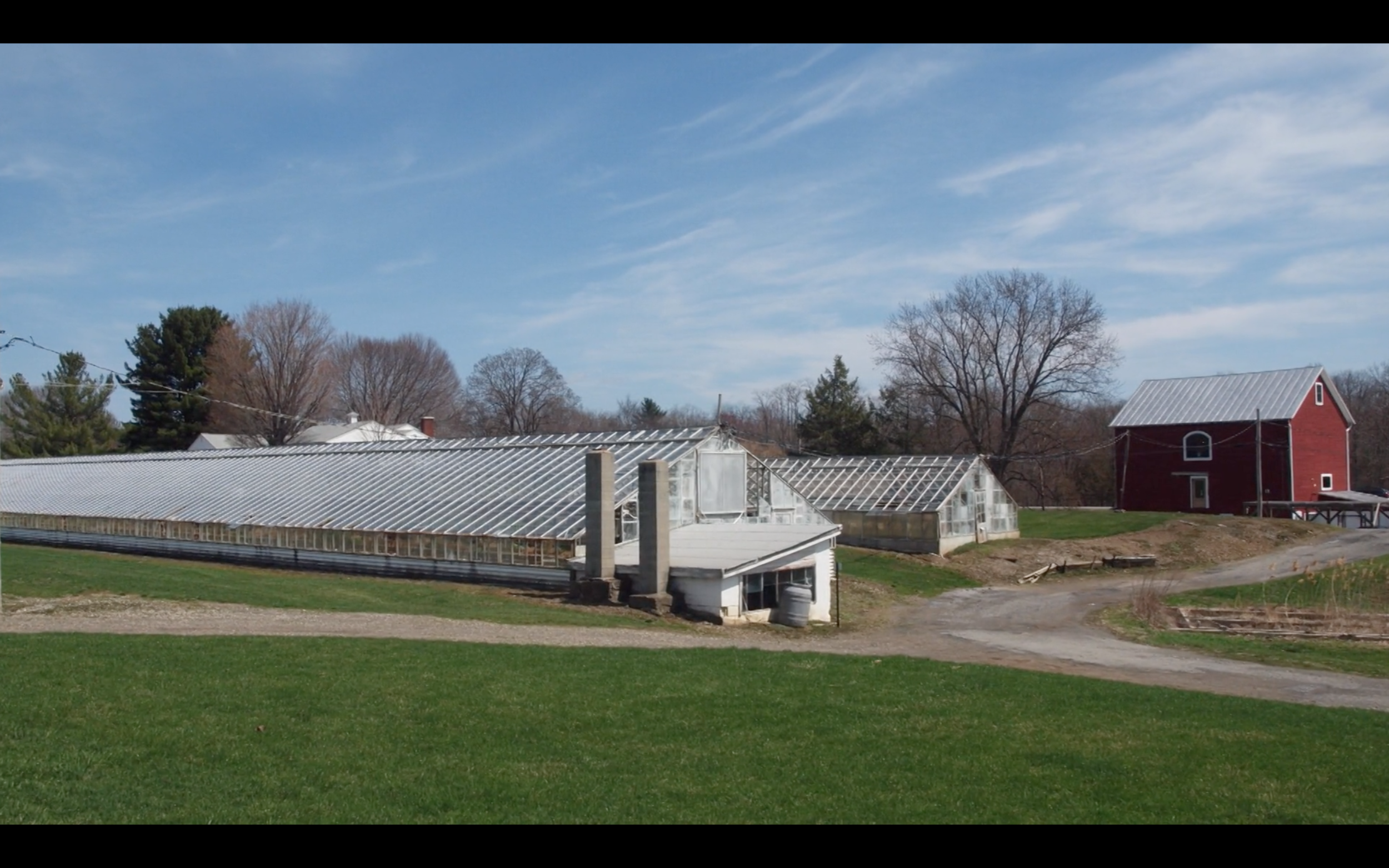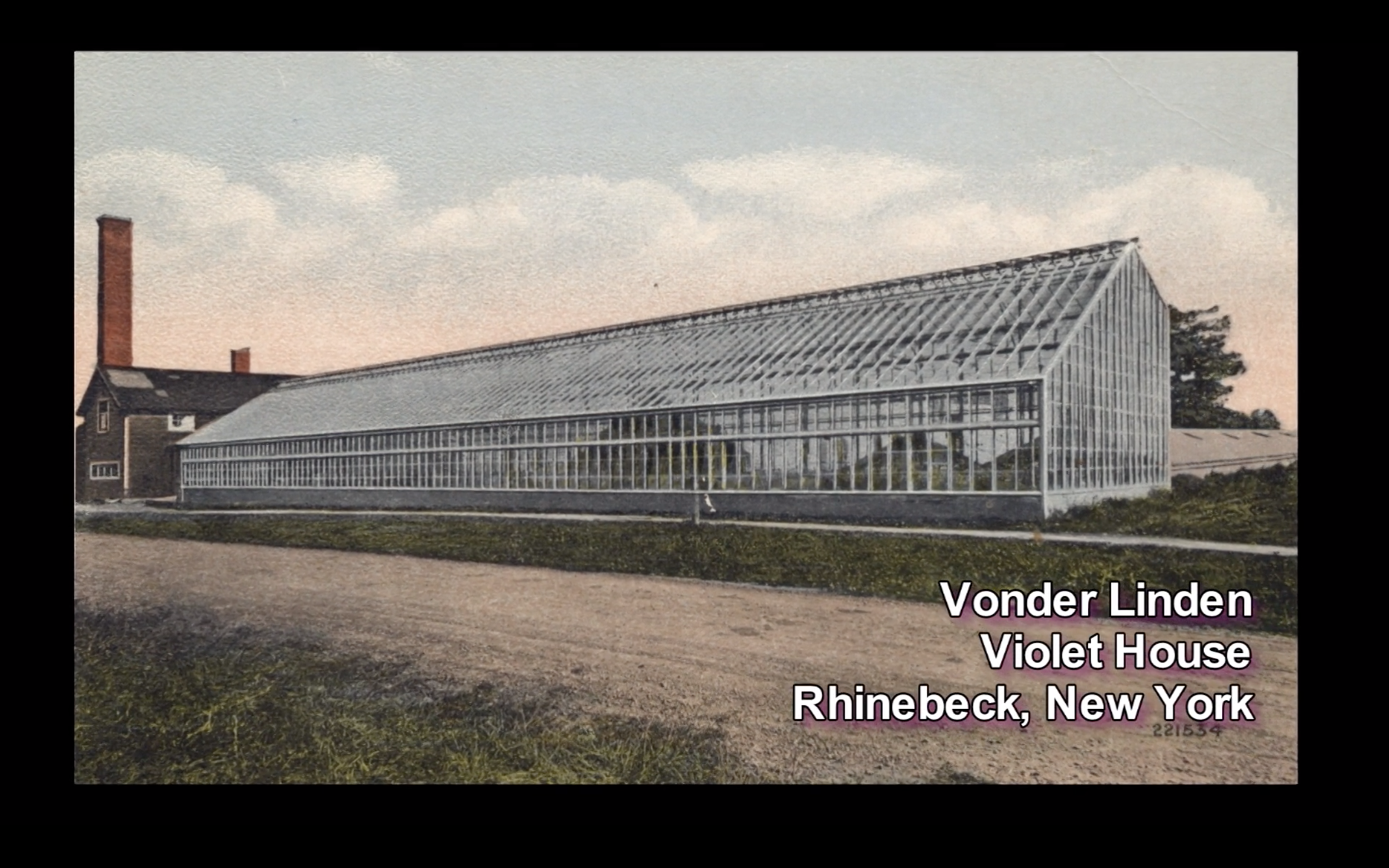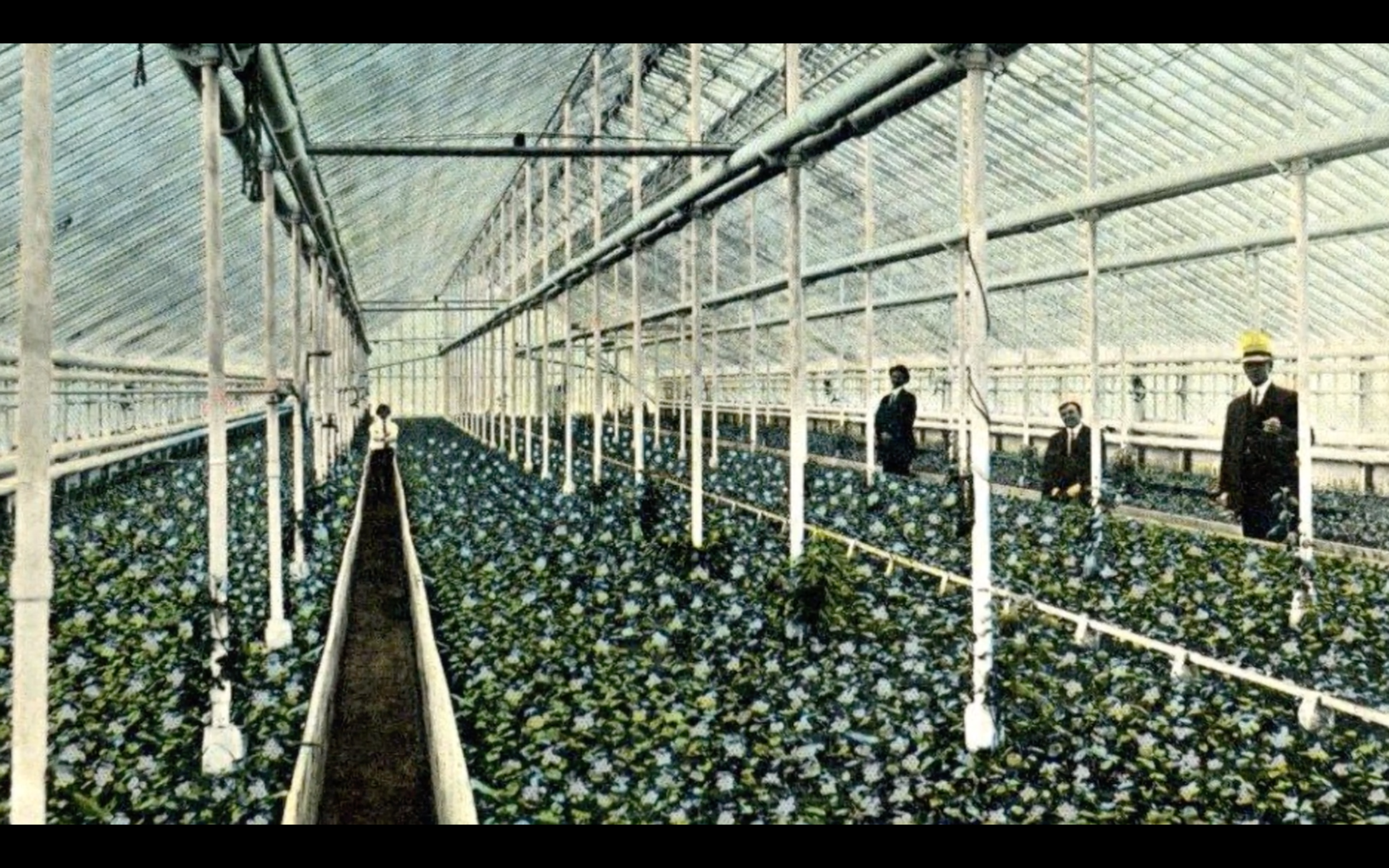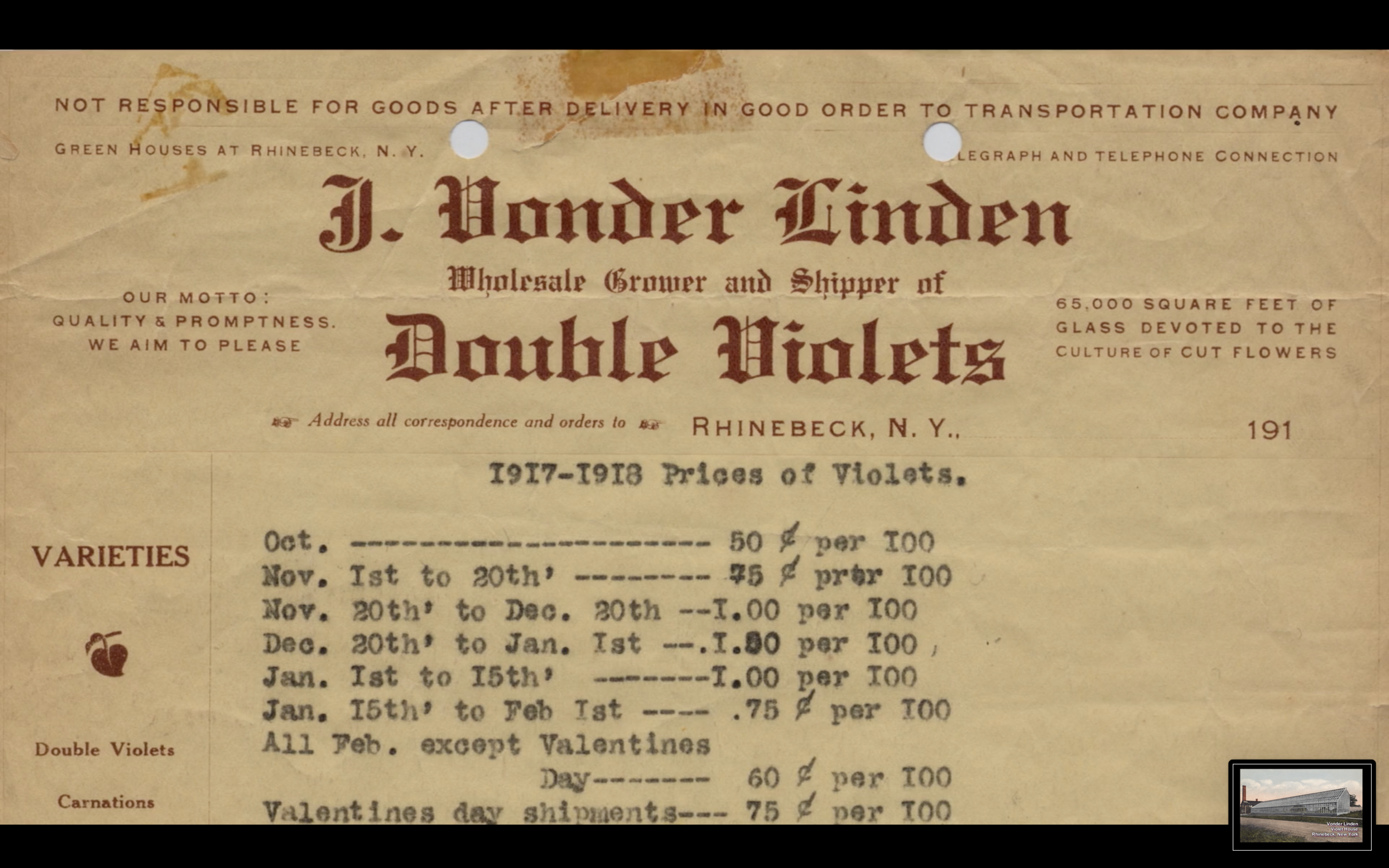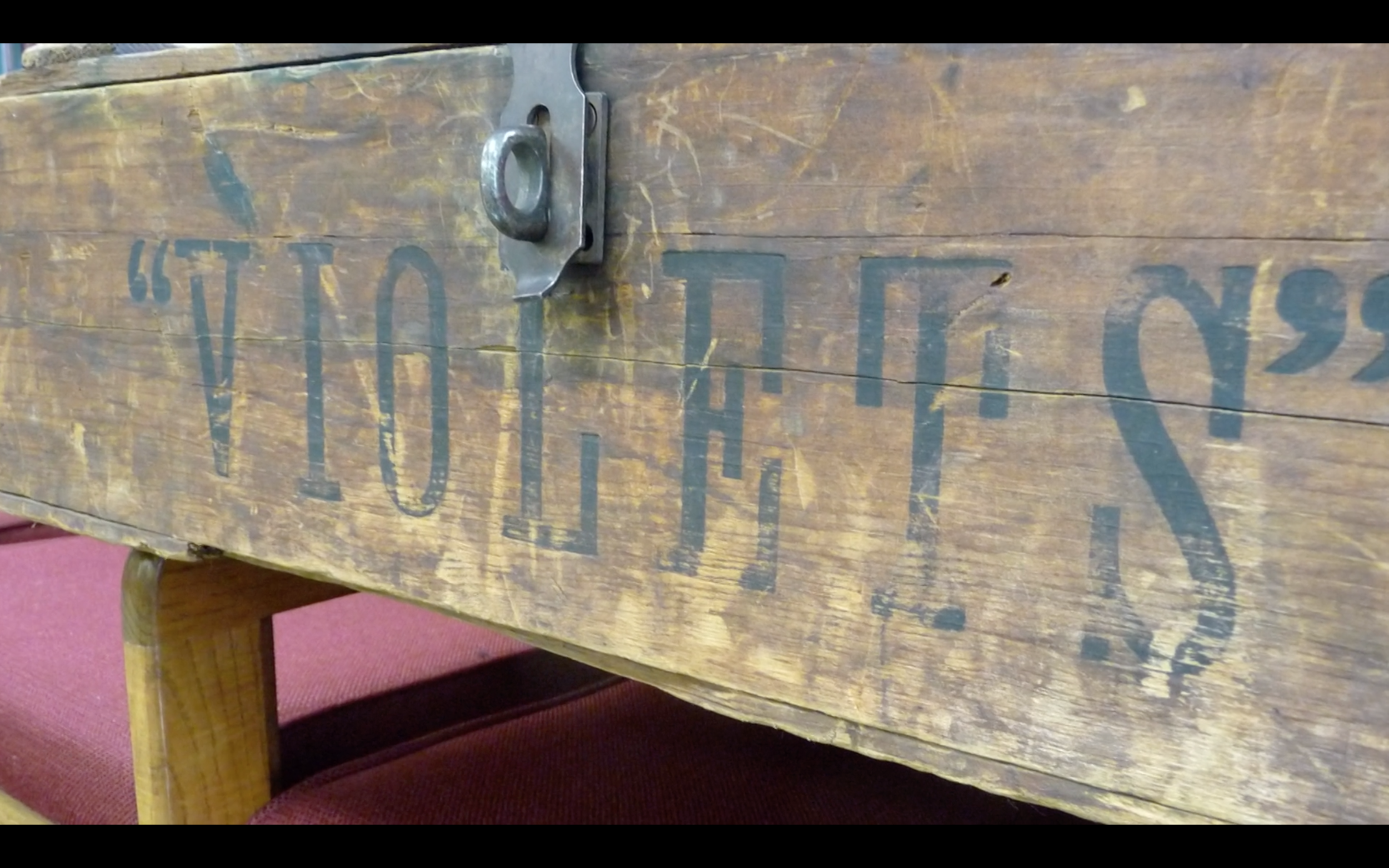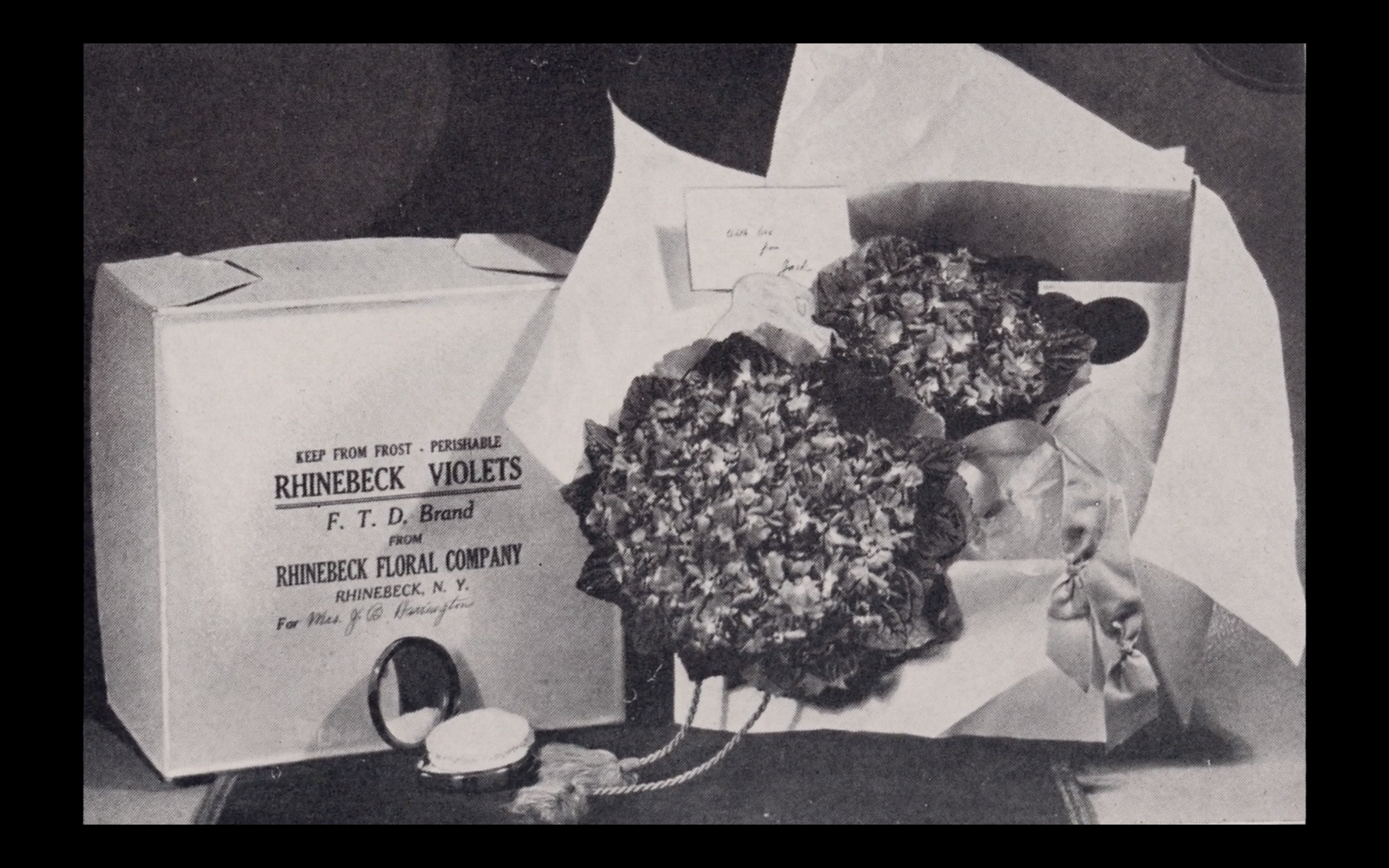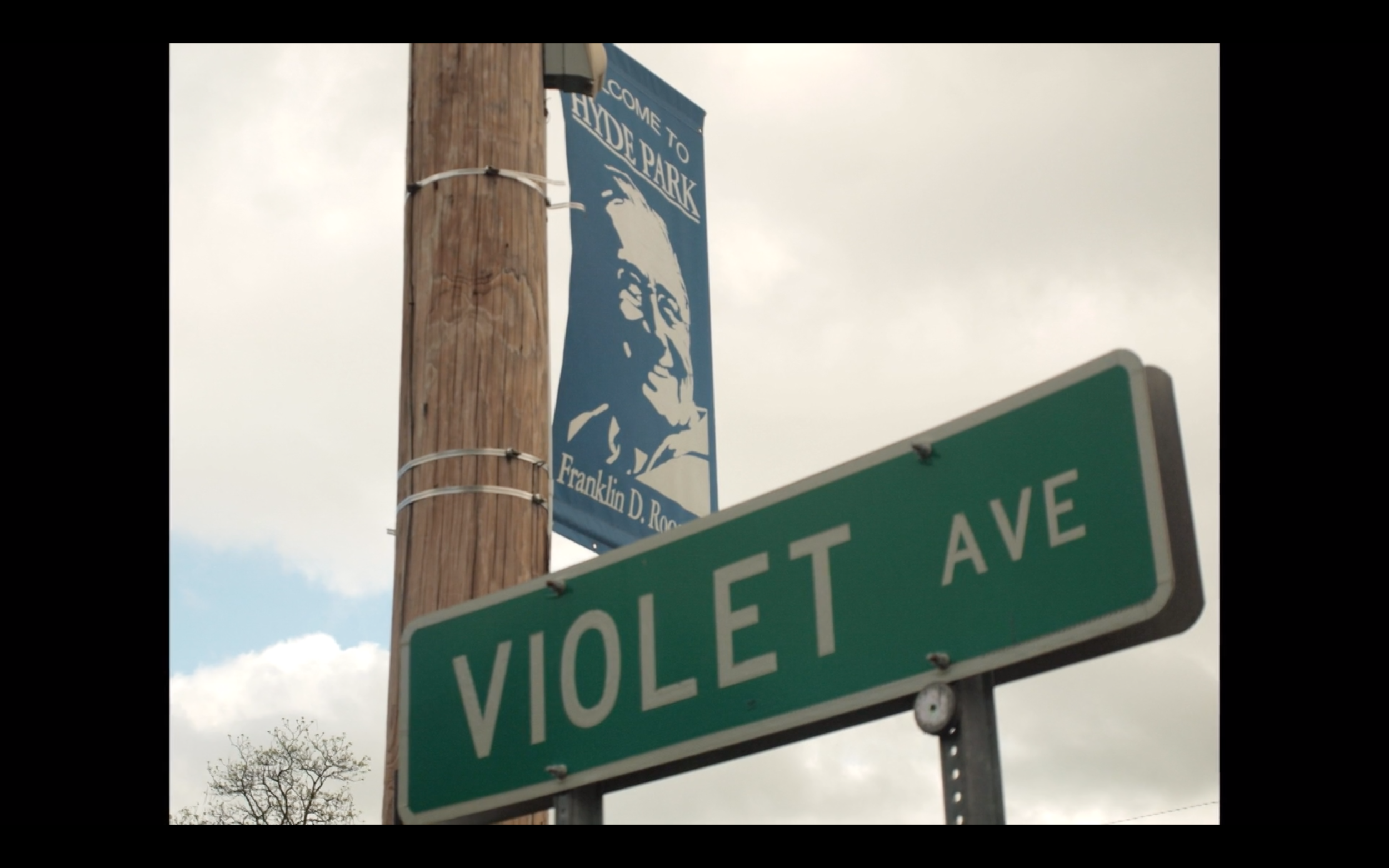Rhinebeck honors past title of “Violet Capital of the World”
When you’re driving around Dutchess County, you may notice a lot of similar road names from Poughkeepsie to Red Hook like Violet Avenue, Violet Hill Road, and Violet Place. It’s also rumored that if you dig in the right place in most backyards in the Village of Rhinebeck, you’ll find glass from the greenhouses that were once at the epicenter of this area’s economic engine: growing violets. Not only did the locality hold the title of the “Violet Capital of the World,” but there were so many greenhouses dotting Rhinebeck it was additionally nicknamed, “The Crystal City.”
In the years before World War I, there were 300-400 greenhouses between Rhinebeck, Red Hook, Staatsburg, Barrytown and Rock City. During this "purple thunderstorm," growers shipped millions of sweet violets around the country, filling up an extra car on “The Violet Special” train from Rhinecliff to New York City several times a week with 100-plus violet boxes containing up to 3,000 flowers per box.
Violets have been a status symbol throughout history: They were Napoleon’s favorite flower, he always carried a locket of violets around his neck. The day that Chopin died, one of his students bought all of the violets in Paris and covered his grave with them, a tradition that has continued. In the 16th century, people who didn’t want to get married wore violets to show their stance. And, after a Broadway play in 1927 about a love triangle involving two women called “The Captive,” violets became an unspoken signifier in the lesbian community to represent love and commitment. Yet, despite attempts by First Lady Eleanor Roosevelt to drum up support for local businesses by bringing bunches of Hudson Valley-grown violets to FDR’s inaugurations, after the association with homosexuals from that play, and the fashion changes of the Roaring ‘20s, the violet growing business was no longer a prominent fixture societally or agriculturally.
Today, there is one greenhouse remaining that grows only one row of violets for cultivation: Dutchess County's F.W. Battenfield’s in Rock City. “I just don’t want to lose that part of the area’s history,” Fred Battenfeld said. Fred’s grandfather and great uncle began growing and shipping violets starting around 1906. The family transitioned to cultivating anemones and Christmas Trees after the violet market dissipated.
These days violets are used mainly in culinary dishes, though the roots and leaves have been traditionally used in an herbal remedies for various diseases, claiming to moderate anger and sleep, as well as "comfort and strengthen the heart."
On Monday, August 3, 2020 Rhinebeck officially honored its past as the former “Violet Capital of the World” with the unveiling of a roadside marker at Drayton Grant Park on Route 9G (also known as Violet Avenue). The marker reads: “By 1894 Rhinebeck grew and shipped millions of violets weekly for corsages and gifts. By 1928 town called ‘Violet Capital of the World.’”
For more on the history of violets in the Hudson Valley, check out Tobe Carey’s locally-produced film, “Sweet Violets” – available to rent or own via Vimeo: https://vimeo.com/ondemand/sweetviolets
“If you dig in most backyards in the Village of Rhinebeck, if you hit the right place, you’re going to hit glass because of all the greenhouses that ended up being buried...”

